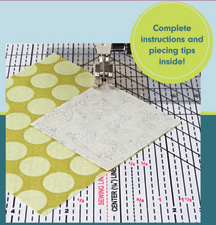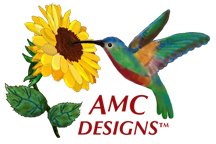
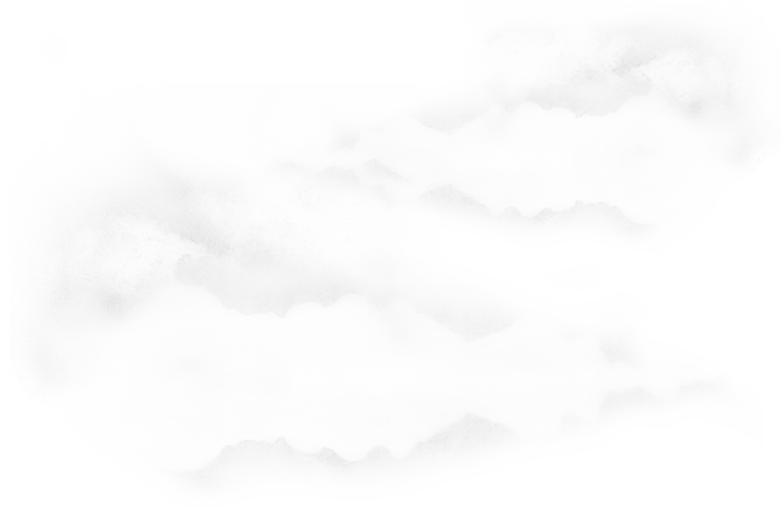

Ultimate Seam Guide
for quilters, sewers, crafters, and decorators
Click here for a tutorial on installing the seam guide on your sewing machine.
Sewing Better Seams Since 2003!
Use an Ultimate Seam Guide for all of your sewing needs, from clothing construction to quilting and home decorating.
No matter what piecing techniques you use, the smooth surface and longer, easy-to-see seam allowance markings on the Ultimate Seam Guide will result in more accurate seam allowances and a more enjoyable sewing experience. In addition to the multiple seam allowance markings, the many features include: sewing diagonal seams quickly without marking or pinning, paper piecing with the fabric on top of the paper, using the repositionable guide bars for strip-piecing four-patch blocks, half-square triangles and more. The seam guide can be trimmed easily on all sides for a custom fit.
Use an Ultimate Seam Guide for all of your sewing needs, from clothing construction to quilting and home decorating.
No matter what piecing techniques you use, the smooth surface and longer, easy-to-see seam allowance markings on the Ultimate Seam Guide will result in more accurate seam allowances and a more enjoyable sewing experience. In addition to the multiple seam allowance markings, the many features include: sewing diagonal seams quickly without marking or pinning, paper piecing with the fabric on top of the paper, using the repositionable guide bars for strip-piecing four-patch blocks, half-square triangles and more. The seam guide can be trimmed easily on all sides for a custom fit.
INTRODUCTION
Most sewers have probably used a piece of masking tape as a seam guide after carefully measuring over from the needle for the various seam allowances needed for different projects. Although there have been many other solutions for seam guides for the sewing machine over the years (the width of the presser foot, adjusting the needle, lines etched in the needle plate, raised guides that attach to the sewing machine, adhesive-backed guides and more), most of them only served one purpose and would not work for the many different techniques that I use for piecing quilt blocks.
My goal was to provide a product that would provide an easy way to measure for different seam allowances and to also work for a variety of piecing techniques, therefore having a multi-purpose seam guide that would work for all types of sewing.
In the process of developing this seam guide I discovered it fit every machine differently so I allowed for several needle positions and made it customizable to fit compact machines, portable machines, or machines used with snap-on trays, tables, or cabinet inserts.
Finding an easy way to access the bobbin on some machines was the only problem I encountered, top-loading bobbins being the most difficult. I found that by placing a layered strip of painter's tape (or a Sewing Edge by Alicia's Attic) to the right of the seam guide would make it easier for repositioning if it needed to be untaped for changing the bobbin or removing the needle plate for cleaning. In most cases it only needs partially untaped to change the bobbin and will drop back into position.
I am continually coming up with new ways to use the seam guide, one of which is a new way to paper piece. I had never tried paper piecing before developing this technique although I was aware of the process. Now I use the seam guide to do almost any block that is more accurately pieced on paper, including log cabins, pineapple blocks, feathered stars, and more.
Some comments from customers: “I love it already”, after seeing only one thing that it will do, and the “best investment since my sewing machine”. Others have said they didn’t put it on their machine right away but once they did they won’t take it off.
Although this seam guide was designed for quilt top piecing, it can be used to quickly measure various seam allowances starting at 1/8" for all types of sewing.
The red sewing line extending in front of the needle is used for piecing 45º angles on squares without marking or pinning for blocks such as snowball, flying geese, half-square triangles, and miters on binding. It is also used for a faster and easier way to paper piece many styles of quilt blocks.
Most sewers have probably used a piece of masking tape as a seam guide after carefully measuring over from the needle for the various seam allowances needed for different projects. Although there have been many other solutions for seam guides for the sewing machine over the years (the width of the presser foot, adjusting the needle, lines etched in the needle plate, raised guides that attach to the sewing machine, adhesive-backed guides and more), most of them only served one purpose and would not work for the many different techniques that I use for piecing quilt blocks.
My goal was to provide a product that would provide an easy way to measure for different seam allowances and to also work for a variety of piecing techniques, therefore having a multi-purpose seam guide that would work for all types of sewing.
In the process of developing this seam guide I discovered it fit every machine differently so I allowed for several needle positions and made it customizable to fit compact machines, portable machines, or machines used with snap-on trays, tables, or cabinet inserts.
Finding an easy way to access the bobbin on some machines was the only problem I encountered, top-loading bobbins being the most difficult. I found that by placing a layered strip of painter's tape (or a Sewing Edge by Alicia's Attic) to the right of the seam guide would make it easier for repositioning if it needed to be untaped for changing the bobbin or removing the needle plate for cleaning. In most cases it only needs partially untaped to change the bobbin and will drop back into position.
I am continually coming up with new ways to use the seam guide, one of which is a new way to paper piece. I had never tried paper piecing before developing this technique although I was aware of the process. Now I use the seam guide to do almost any block that is more accurately pieced on paper, including log cabins, pineapple blocks, feathered stars, and more.
Some comments from customers: “I love it already”, after seeing only one thing that it will do, and the “best investment since my sewing machine”. Others have said they didn’t put it on their machine right away but once they did they won’t take it off.
Although this seam guide was designed for quilt top piecing, it can be used to quickly measure various seam allowances starting at 1/8" for all types of sewing.
The red sewing line extending in front of the needle is used for piecing 45º angles on squares without marking or pinning for blocks such as snowball, flying geese, half-square triangles, and miters on binding. It is also used for a faster and easier way to paper piece many styles of quilt blocks.
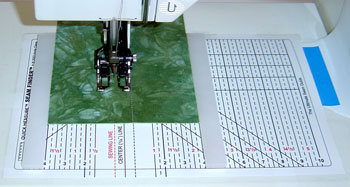
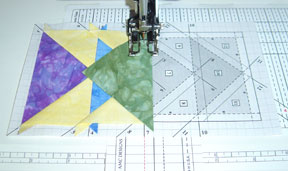
The guide bars are used for unique strip-piecing techniques by cutting double widths of fabric and sewing down the middle instead of the sides for more accurate seams to make blocks such as four-patch, nine-patch, triangle-squares, and some bargello style quilts. I’ve used them to make finished squares as small as 3/8" starting with 1-1/2" fabric strips. Use just one guide bar to the right of the needle as a raised sewing guide for various seam allowances.
Whatever method you choose for piecing your quilt blocks, the most important thing is to enjoy the process.
Whatever method you choose for piecing your quilt blocks, the most important thing is to enjoy the process.
Paper piecing Flying Geese
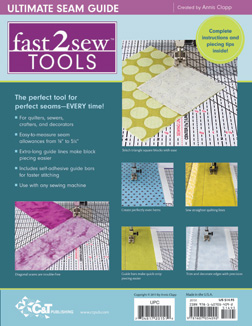
Double strip-piecing
